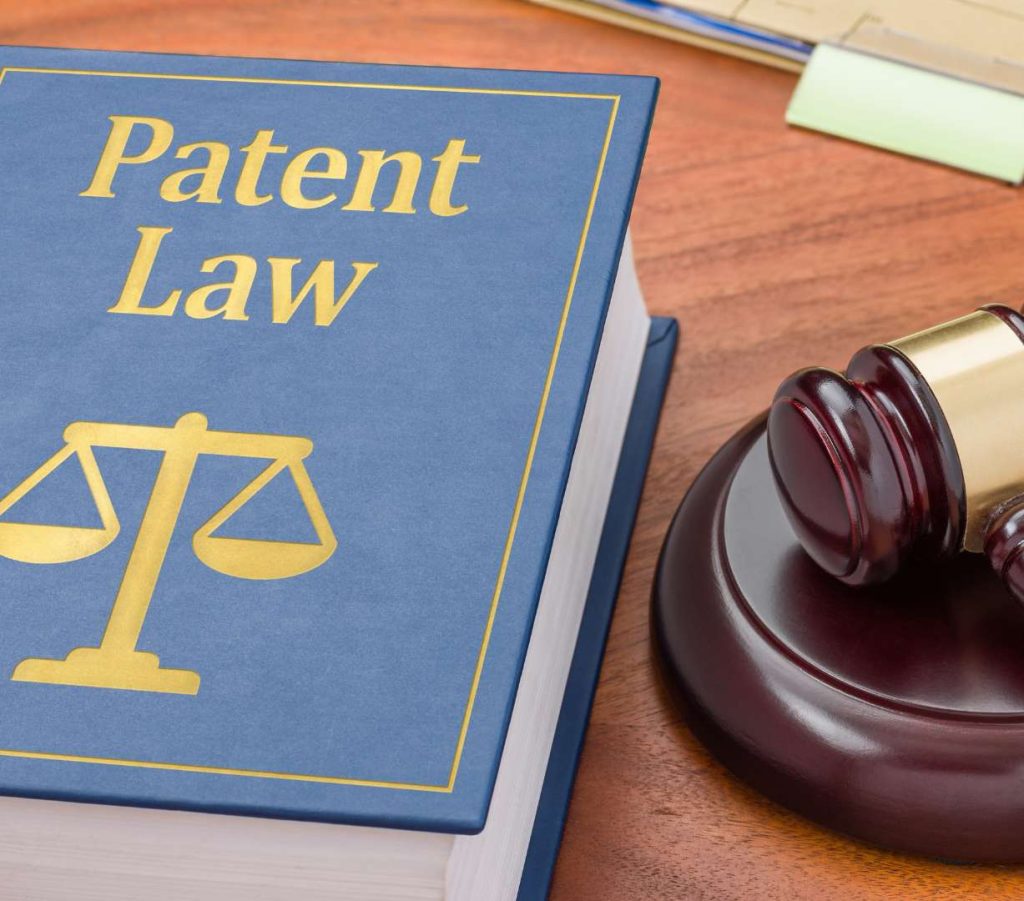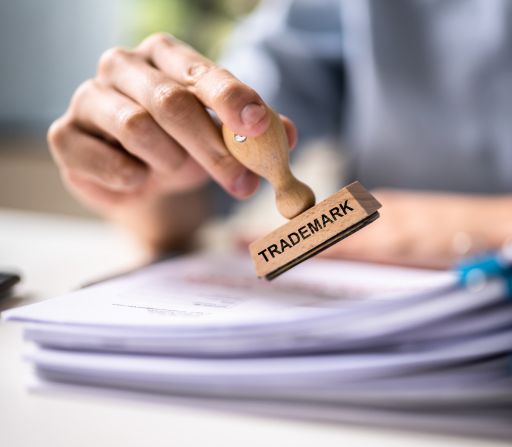Inventor Resources
- Home
- Inventor Resources
Get Your Free Consultation!
Inventors Resources
What Are Patents, Trademarks, Servicemarks, and Copyrights?
Some people confuse patents, copyrights, and trademarks. Although there may be some similarities among these kinds of intellectual property protection, they are different and serve different purposes.


Get Expert Consultation
What is a Patent?
A patent for an invention is the grant of a property right to the inventor, issued by the United States Patent and Trademark Office. Generally, the term of a new patent is 20 years from the date on which the application for the patent was filed in the United States or, in special cases, from the date an earlier related application was filed, subject to the payment of maintenance fees. U.S. patent grants are effective only within the United States, U.S. territories, and U.S. possessions. Under certain circumstances, patent term extensions or adjustments may be available.
The right conferred by the patent grant is, in the language of the statute and of the grant itself, “the right to exclude others from making, using, offering for sale, or selling” the invention in the United States or “importing” the invention into the United States. What is granted is not the right to make, use, offer for sale, sell or import, but the right to exclude others from making, using, offering for sale, selling or importing the invention. Once a patent is issued, the patentee must enforce the patent without aid of the USPTO.
Explore
Transform Your Ideas into Reality
Embark on a journey to transform your ideas into reality. At All In One Inventions, we provide the tools and support to turn your creative vision into tangible innovations.
Patent Ideas
There are Three Types of Patents:
Not every idea requires a patent due to the associated costs and time. Consider obtaining a patent if:

Utility patents
Utility patents may be granted to anyone who invents or discovers any new and useful process, machine, article of manufacture, or composition of matter, or any new and useful improvement thereof;

Design patents
Design patents may be granted to anyone who invents a new, original, and ornamental design for an article of manufacture

Plant patents
Plant patents may be granted to anyone who invents or discovers and asexually reproduces any distinct and new variety of plant.
What is a Trademark or Servicemark?
A trademark is a word, name, symbol, or device that is used in trade with goods to indicate the source of the goods and to distinguish them from the goods of others. A servicemark is the same as a trademark except that it identifies and distinguishes the source of a service rather than a product. The terms “trademark” and “mark” are commonly used to refer to both trademarks and servicemarks. Trademark rights may be used to prevent others from using a confusingly similar mark, but not to prevent others from making the same goods or from selling the same goods or services under a clearly different mark. Trademarks that are used in interstate or foreign commerce may be registered with the USPTO. The registration procedure for trademarks and general information concerning trademarks can be found in the separate book entitled “Basic Facts about Trademarks.” (https://www.uspto.gov/sites/default/files/BasicFacts_1.pdf).
What is a Copyright?
Copyright is a form of protection provided to the authors of “original works of authorship” including literary, dramatic, musical, artistic, and certain other intellectual works, both published and unpublished. The 1976 Copyright Act generally gives the owner of copyright the exclusive right to reproduce the copyrighted work, to prepare derivative works, to distribute copies or phonorecords of the copyrighted work, to perform the copyrighted work publicly, or to display the copyrighted work publicly.
The copyright protects the form of expression rather than the subject matter of the writing. For example, a description of a machine could be copyrighted, but this would only prevent others from copying the description; it would not prevent others from writing a description of their own or from making and using the machine. Copyrights are registered by the Copyright Office of the Library of Congress.

Get Started!
You're one click away from starting your invention journey!

Patent Laws
The Constitution of the United States gives Congress the power to enact laws relating to patents, in Article I, section 8, which reads "Congress shall have power . . . to promote the progress of science and useful arts, by securing for limited times to authors and inventors the exclusive right to their respective writings and discoveries." Under this power Congress has from time to time enacted various laws relating to patents. The first patent law was enacted in 1790. The patent laws underwent a general revision which was enacted July 19, 1952, and which came into effect January 1, 1953. It is codified in Title 35, United States Code. Additionally, on November 29, 1999, Congress enacted the American Inventors Protection Act of 1999 (AIPA), which further revised the patent laws. See Public Law 106-113, 113 Stat. 1501 (1999).
The patent law specifies the subject matter for which a patent may be obtained and the conditions for patentability. The law establishes the United States Patent and Trademark Office to administer the law relating to the granting of patents and contains various other provisions relating to patents.
What Can Be Patented
The patent law specifies the general field of subject matter that can be patented and the conditions under which a patent may be obtained.
In the language of the statute, any person who “invents or discovers any new and useful process, machine, manufacture, or composition of matter, or any new and useful improvement thereof, may obtain a patent,” subject to the conditions and requirements of the law. The word “process” is defined by law as a process, act, or method, and primarily includes industrial or technical processes. The term “machine” used in the statute needs no explanation. The term “manufacture” refers to articles that are made, and includes all manufactured articles. The term “composition of matter” relates to chemical compositions and may include mixtures of ingredients as well as new chemical compounds. These classes of subject matter taken together include practically everything that is made by man and the processes for making the products.
The Atomic Energy Act of 1954 excludes the patenting of inventions useful solely in the utilization of special nuclear material or atomic energy in an atomic weapon. See 42 U.S.C. 2181(a). The patent law specifies that the subject matter must be “useful.” The term “useful” in this connection refers to the condition that the subject matter has a useful purpose and also includes operativeness, that is, a machine which will not operate to perform the intended purpose would not be called useful, and therefore would not be granted a patent.
Interpretations of the statute by the courts have defined the limits of the field of subject matter that can be patented, thus it has been held that the laws of nature, physical phenomena, and abstract ideas are not patentable subject matter.
A patent cannot be obtained upon a mere idea or suggestion. The patent is granted upon the new machine, manufacture, etc., as has been said, and not upon the idea or suggestion of the new machine. A complete description of the actual machine or other subject matter for which a patent is sought is required.

Do You Have An Amazing Invention Idea?
- We can help develop your invention idea so it stands out from the rest.
- Uncover unparalleled creativity and innovation with the best in invention idea development.
Business Strategies
The Basics
Licensing Agreements
A licensing agreement is a legal contract between two parties, known as the licensor and the licensee. In a typical licensing agreement, the licensor grants the licensee the right to produce and sell goods, apply a brand name or trademark, or use patented technology owned by the licensor. In exchange, the licensee usually submits to a series of conditions regarding the use of the licensor’s property and agrees to make payments known as royalties.
Licensing agreements cover a wide range of well-known situations. For example, a retailer might reach agreement with a professional sports team to develop, produce, and sell merchandise bearing the sports team’s logo. Or a small manufacturer might license a proprietary production technology from a larger firm to gain a competitive edge rather than expending the time and money trying to develop its own technology. Or a greeting card company might reach agreement with a movie distributor to produce a line of greeting cards bearing the image of a popular animated character.
Explore
Elements of a Typical Licensing Agreement
Because of the legal ground they must cover, some licensing agreements are fairly lengthy and complex documents. But most such agreements cover the same basic points. These include the scope of the agreement, including exclusivity or territorial restrictions; financial aspects including required advances, royalty rates, and how royalties are calculated; guarantees of minimum sales; time schedules involving “to market” dates, length of contract, and renewal options; the lessor’s rights of monitoring and quality control, including procedures to be followed; minimum inventories required to be maintained; finally, returns and allowances.
One of the most important elements of a licensing agreement covers the financial arrangement. Payments from the licensee to the licensor usually take the form of guaranteed minimum payments and royalties on sales. Royalties typically range from 6 to 10 percent, depending on the specific property involved and the licensee’s level of experience and sophistication. Not all licensors require guarantees, although some experts recommend that licensors get as much compensation up front as possible. In some cases, licensors use guarantees as the basis for renewing a licensing agreement. If the licensee meets the minimum sales figures, the contract is renewed; otherwise, the licensor has the option of discontinuing the relationship.
Another important element of a licensing agreement establishes the time frame of the deal. Many licensors insist upon a strict market release date for products licensed to outside manufacturers. After all, it is not in the licensor’s best interest to grant a license to a company that never markets the product. The licensing agreement will also include provisions about the length of the contract, renewal options, and termination conditions.
Most licensing agreements also address the issue of quality. For example, the licensor may insert conditions in the contract requiring the licensee to provide prototypes of the product, mockups of the packaging, and even occasional samples throughout the term of the contract. Of course, the best form of quality control is usually achieved before the fact—by carefully checking the reputation of the licensee. Another common quality-related provision in licensing agreements involves the method for disposal of unsold merchandise. If items remaining in inventory are sold as cheap knockoffs, it can hurt the reputation of the licensor in the marketplace.
Another common element of licensing agreements covers which party maintains control of copyrights, patents, or trademarks. Many contracts also include a provision about territorial rights, or who manages distribution in various parts of the country or the world. In addition to the various clauses inserted into agreements to protect the licensor, some licensees may add their own requirements. They may insist on a guarantee that the licensor owns the rights to the property, for example, or they may insert a clause prohibiting the licensor from competing directly with the licensed property in certain markets.



